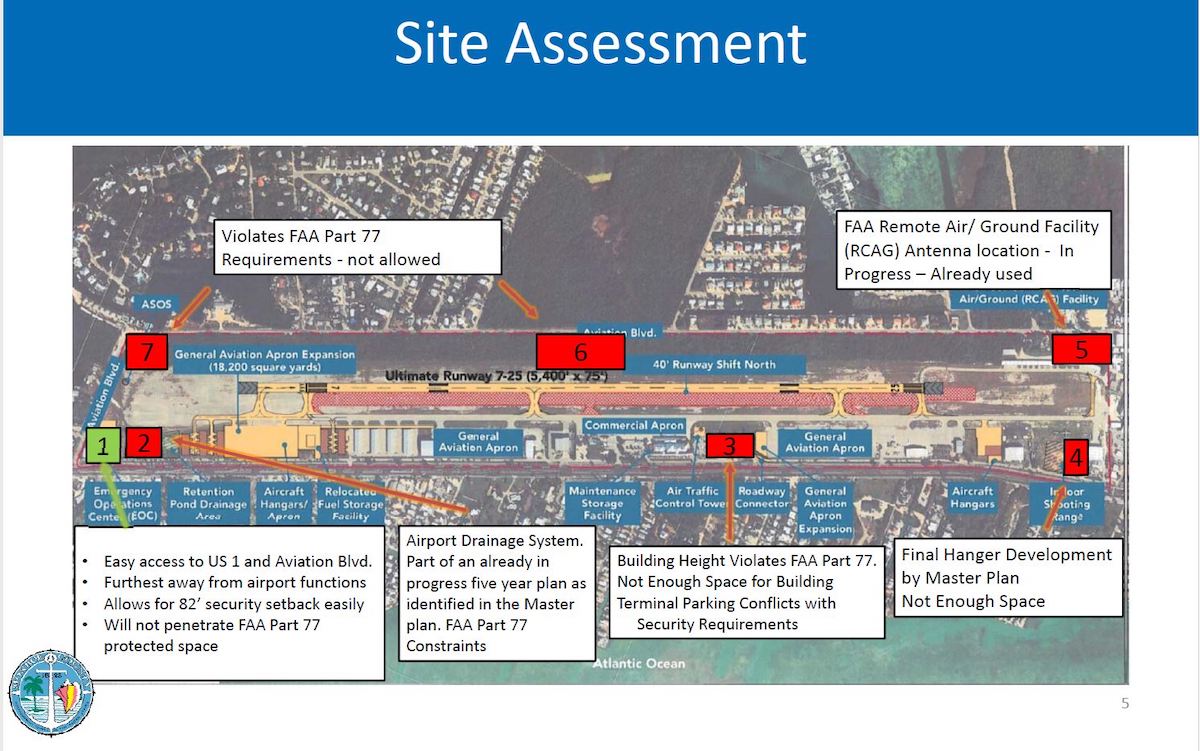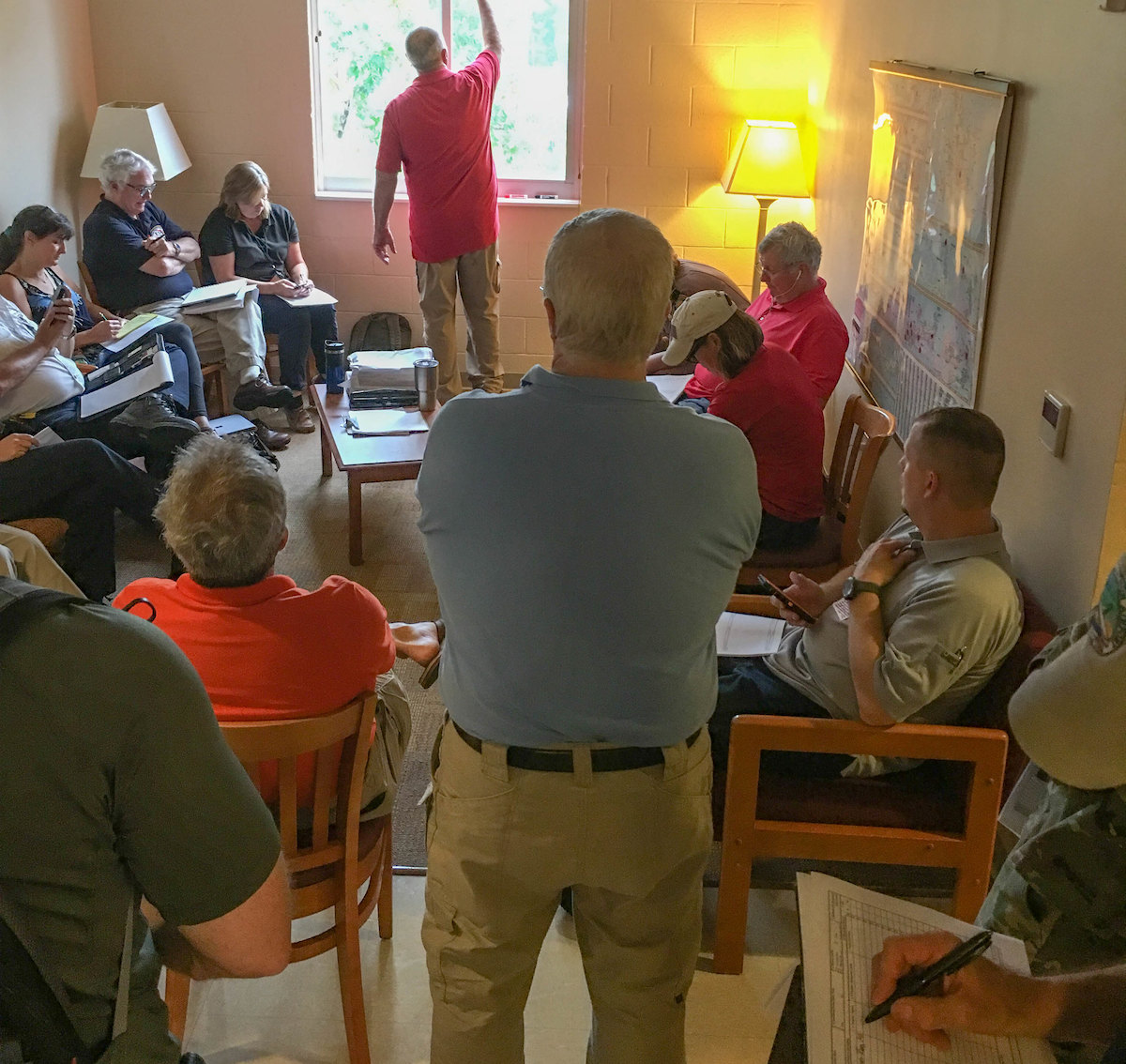
Climate change, sea level rise, and the future of the Keys were hot button topics at the last BOCC meeting of the year. The recent Southeast Florida Regional Climate Leadership Summit in Key West was still fresh in everyone’s mind, including the new sea level projections of 10-17 inches near Key West by 2040 and 21-40 inches by 2070.
And, while the summit created a heightened awareness of the precarious position a chain of islands on porous coral rock can find itself in, more importantly, it catalyzed targeted climate adaptation measures to ensure the future of the Keys remains solid.

Municipalities in the Keys are already preparing for this “new normal,” proactively raising roads, installing injection wells, and improving stormwater plans. The county also adopted this mitigation and adaptation mindset a few years ago. The county built the Stock Island Fire Station and the Marathon Library with an extra 2 feet of elevation over the code requirement, described Rhonda Haag, the county’s chief resiliency officer. “We wanted to make sure the fire station and the library wouldn’t get wet.” Haag confirmed that the county is doing the same preemptive elevation for all new buildings. “It doesn’t cost that much extra when you’re building a new building to elevate up front – just some additional concrete. But, if you wait and try to elevate it after it’s built, it’s too late and much more expensive,” she said.
The summit also called for an extended 50-year planning horizon for municipalities and governments. Haag said, “When you’re planning for infrastructure like our buildings that are designed to last longer than 50 years, you have to keep the projections in mind.” She added, “Infrastructure is expensive, and we want to make sure when we’re building – whether it be a building or a road – that we get full use of it.” She continued. “We want to make sure that in 50 years, the bottom of the building isn’t experiencing inundation from sea level rise. So, we have to build it extra high so the bottom won’t get wet.”
With all that in mind, the BOCC set the tone at their December meeting about sea level rise. Commissioner Michelle Coldiron acknowledged the new reality in the Keys. She said, “I think we’re finally beyond the finger-blaming. We can’t stop this water, so let’s accommodate it.”
The commissioners all agreed that retrofits to old infrastructure and construction of new county buildings needed to keep the new sea level projections in mind. Talking about the life expectancy of new buildings, county administrator Roman Gastesi similarly said, “If you’re building a building that is expected to have a 50-year lifespan, you should make sure it can withstand the conditions that we’re expecting in 50 years.”
Getting into the details of a few planned projects, mayor Heather Carruthers asked assistant county administrator Kevin Wilson about plans for the new Plantation Key Judicial Courthouse and Detention Facility. “My first question to Kevin is, how much is this elevated? What’s the flood zone? How do the new flood maps change this?”
The mayor requested staff to consider designs and construction that include active climate adaptations. She said, “Inundation levels, especially with king tides, are coming faster than we anticipated. Before we invest in this building, we must make sure it’s sound.” She added, “And, when we make new buildings, we should put solar on them. I think it’s the right thing to do.”
Wilson answered, “That level of redesign will create delay.” Asking for direction from the commission on this and other county construction, Wilson continued. “We have another $20 million building coming up – the EOC [Emergency Operations Center]. We need to establish a policy basis for future buildings.”
Coldiron affirmed, “This is the direction we want to go.” The commissioner from Marathon continued. “So, are you looking at the EOC to make sure it’s elevated enough?” Wilson assured the commission, “The EOC is a unique animal. It’s being designed for a 10,000 year storm with storm surges. As sea level rises, you can anticipate 10,000 year storms to become worse, but we’re building for that.”

Commissioner David Rice agreed that elevations and solar should be the goal for future county constructions but also brought up competing priorities in the present. Citing the tremendous fiscal challenges of such an ambitious adaptation strategy, he said, “This is gonna be on the backs of all of us to pay for.”
The commissioner added that it was time for “courageous conversations” about priorities for county money. Carruthers agreed. “Sacrifices will probably have to be made. There are some things we want to do that we might have to postpone.”
To sum it up, Haag said, “We want to remain resilient as long as possible and as wide as possible by planning as far ahead as possible. We do that by proactive building.” Carruthers agreed. She said, “If we aren’t setting an example, who is? I don’t want to look anymore; I want to do it.”
























